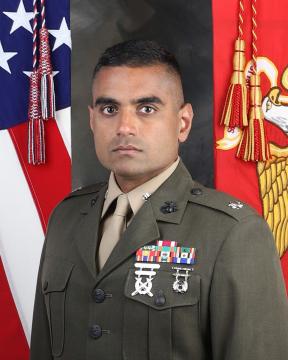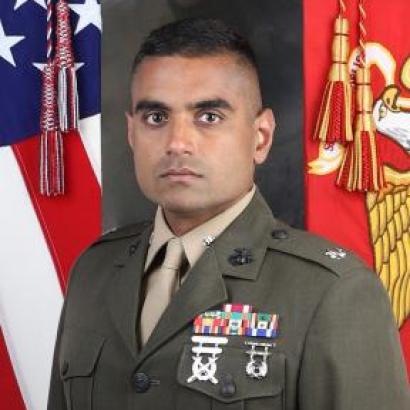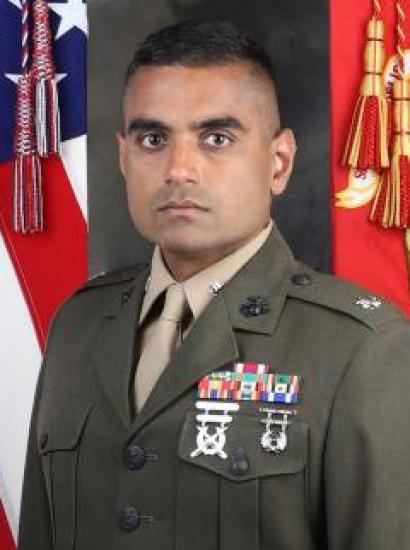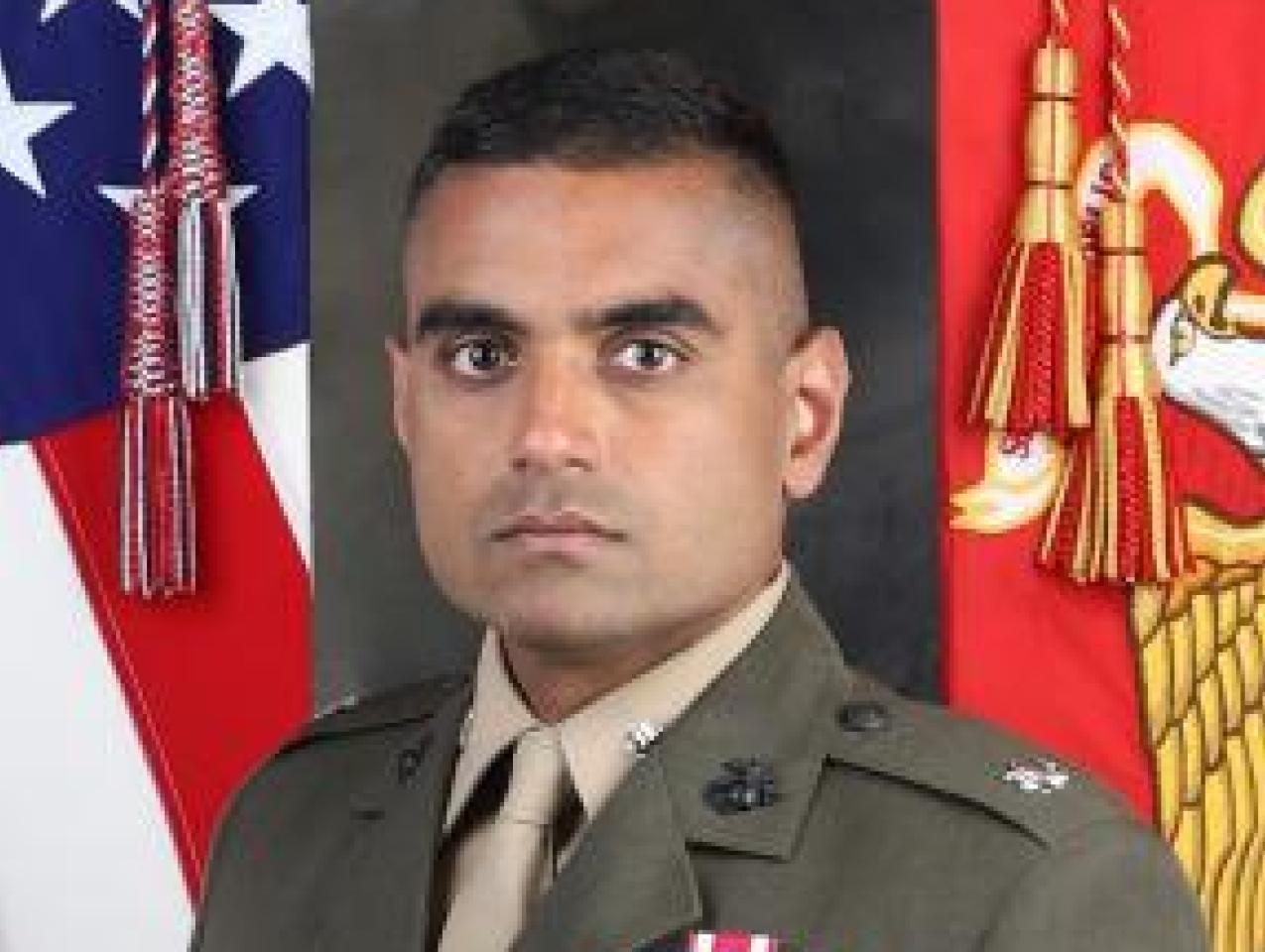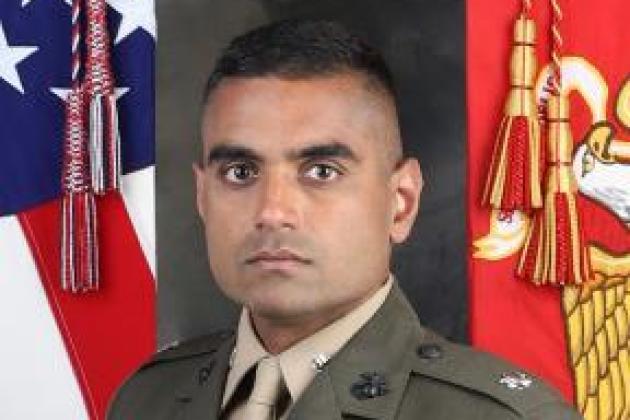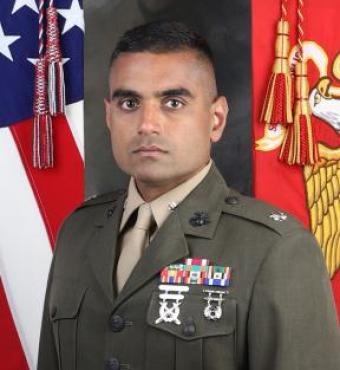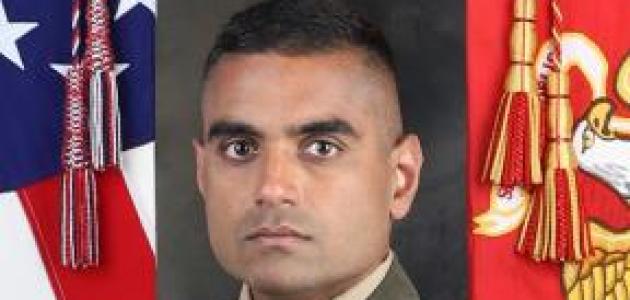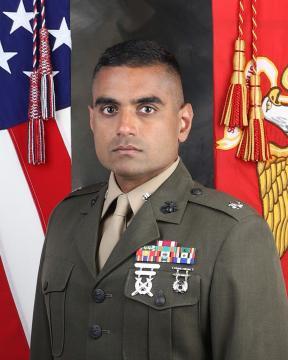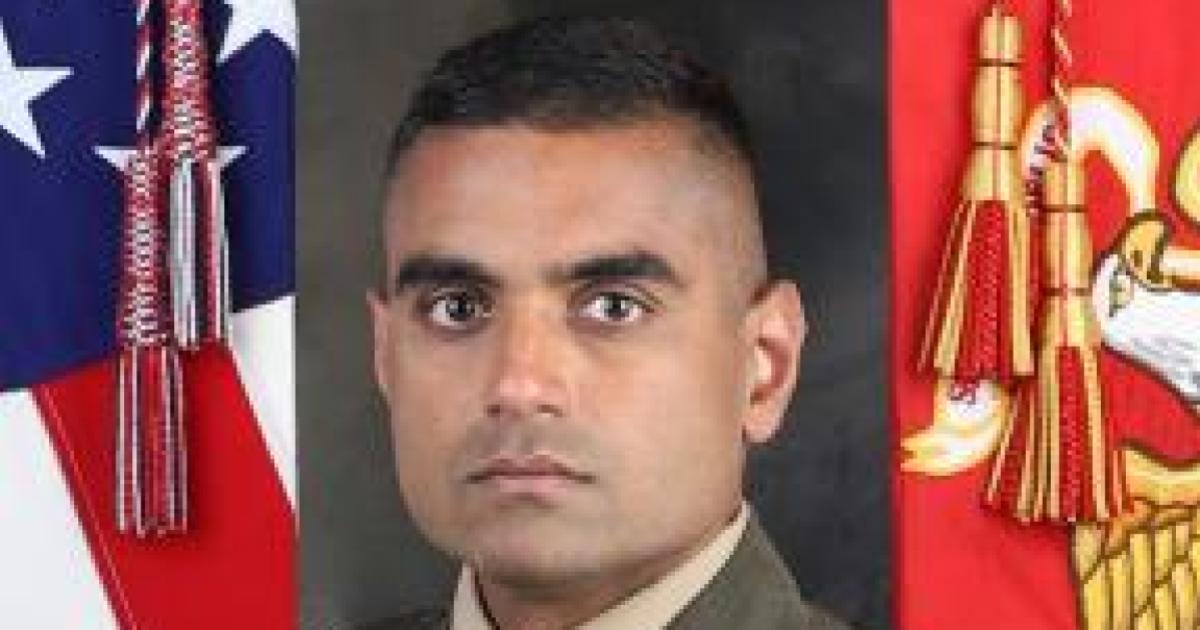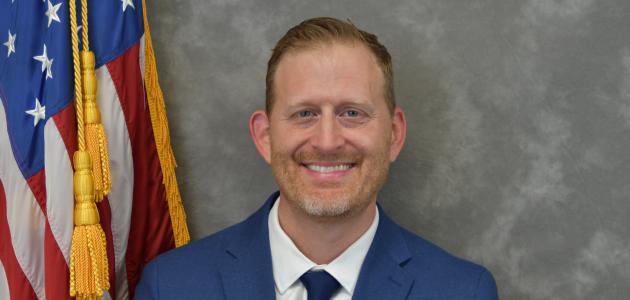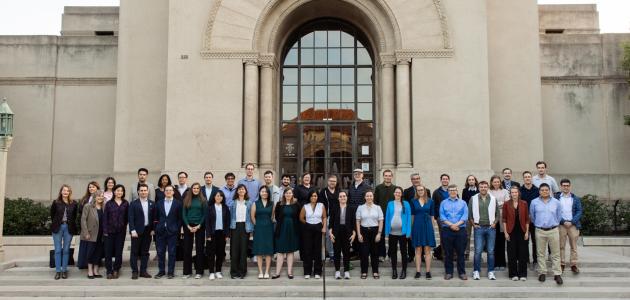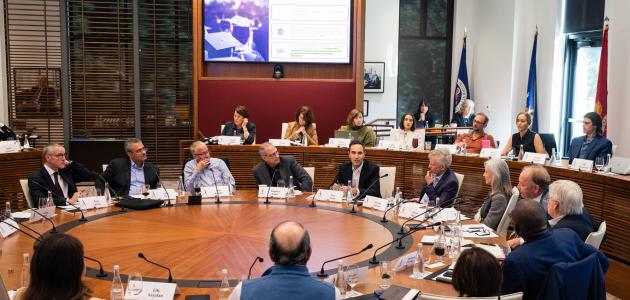Lieutenant Colonel Arun Shankar, representing the US Marine Corps, is a National Security Affairs Fellow for the academic year 2022–23 at the Hoover Institution.
In this interview, Shankar talks about his two-decade career in the Marine Corps as a tactical communications officer and operations research analyst, both of which included deployments during the wars in Iraq and Afghanistan.
Shankar explains how he applied his educational opportunities to support the Corps's mission. His academic work has focused on building mathematical models to detect the prevalence of improvised explosive devices (IEDs) that killed and injured American troops on patrol in Afghanistan and Iraq. He describes how this research contributed to the US military's counterinsurgency strategy. By more effectively identifying IEDs and removing them from highways, roads, and trails, American forces were able to build trust with local populations.
Shankar also discusses his experiences at the Hoover Institution this academic year. He says that the fellowship's research, centered on advancing human freedom and prosperity, has shaped how he thinks about the command of marines. Finally, Shankar outlines his bold research initiative that involves devolving authority over US cyber offensive capabilities to the tactical commander level.
Why did you decide to join the US Marine Corps?
Shankar: I was motivated to join the Marine Corps after September 11, 2001. I completed officer candidate school ten months after the terror attacks and was commissioned on July 15, 2002. I recently crossed my twenty-year mark and am very proud of that milestone. I didn't remain in the Corps for the same reasons that I first joined. I stayed because I enjoy serving with marines and being a marine. I hope they will let me serve for as long as possible.
What is your role as a communications officer?
Shankar: I am a tactical communications officer. When marines go to the field, my team and I set up, maintain, and secure all the computer networks, field radios, and satellite systems needed for a commander to issue orders and receive feedback. It is a complex effort that depends on decentralized initiative and teamwork. A complete setup timeline can range from a few hours to a few days, depending on the scope of the requirements.
Could you give examples of this type of work in the areas where you have been deployed?
Shankar: I was sent to Iraq and Afghanistan for a total of three deployments, for a combined duration of about twenty-eight months. Specifically, as a communications officer, my team and I maintained radio and network connectivity for commanders to command and control forces. This includes the provision of tactical radios on convoys and outlying sites, as well as satellite and fiber optic communications on more resilient bases. Cybersecurity also had a significant role in this effort.
Will you tell us about your educational background?
Shankar: I have had the great fortune of being afforded opportunities for advanced education in the Marine Corps that most folks of my rank and generation have not been allowed. For this, I am incredibly grateful to the Marine Corps.
I received my undergraduate degree in “engineering route to business” from the University of Texas at Austin. It is an interdisciplinary major in both finance and mechanical engineering. Then, four years into my career, the Marine Corps sent me to the Naval Postgraduate School (NPS) in Monterey, California, where I simultaneously worked toward master's degrees in both mathematics and operations research. Operations research combines statistics, data analysis, optimization, and simulation techniques that provide analytical rigor for solving complex problems with advanced mathematics. It became prevalent after World War II and remains a big part of data science today.
After graduating from NPS, I went to Quantico [Marine Corps base in Virginia] and served as an operations research analyst on two deployments. While deployed to Iraq, I studied improvised explosive devices (IEDs) and roadside bombs, attempting to determine correlations. I later studied this challenge again in Afghanistan while studying Afghan population survey data, casualty evacuation timelines, and Afghan Army effectiveness. I was thankful that what I learned at NPS directly applied to these wartime deployments.
When I returned stateside, I had a great boss, Doug Hoffman, who encouraged me to enroll in the operations research PhD program at George Mason University. It took me six years to get it done, which was not what I expected, but it was worth it. My dissertation is about estimating where and when a friendly force might encounter IEDs on foot patrols. I built a mathematical model that estimates the prevalence of such weapons. I am proud of that work. It was published in Military Operations Research and won the 2015 paper of the year "MOR Journal Award."
I see sabbaticals for education as extremely valuable for all our service members. As a tactical communications officer, I don't do high-level mathematics every single day, but operations research and the education I received have helped me learn how to learn. Thus, in uncertain environments where I am asked to complete tasks that I have never done before, I have confidence in my ability to outline problems, derive solutions, and then clearly communicate them to my colleagues.
Will you tell us more about your research on the prevalence of IEDs in Afghanistan and Iraq?
Shankar: Most of this research was conducted in Afghanistan in 2010 and 2011. This research is unique because I was trying to understand where and when US foot patrols could expect to encounter IEDs. A lot of research was already conducted on IED use against tactical vehicles. This problem set is somewhat straightforward because a road is two-dimensional, and studying that confined area can be a routine mathematical problem. But when you are analyzing large spaces where troops walk, it involves more probability modeling and statistical distributions. In addition, it requires data about the friendly forces on the ground. You don't just have to understand the location and time of IED encounters—you also have to know when and where Marines are patrolling, even when they don't necessarily encounter an IED.
Collecting this friendly force data was a vital element of the research effort. I developed spreadsheet tools that units used to collect this data. In return, I provided them with quantitative analysis that they could use in their next week's patrol planning. I eventually married the IED encounter and friendly force patrol data and fit them into statistical distributions. These distributions then formed the foundation of the prediction model.
Did you find a behavioral pattern in the enemy in how they would plant the IEDs?
Shankar: Some of our adversary's behavior was obvious, but having the analytical rigor behind our efforts helped. So, the more marines patrolled in a particular area, the more we would see IEDs. Certain terrain features lent themselves to better IED hiding spots. Some areas had IEDs planted more often at night—others during the day. But if marines didn't patrol it regularly, it became tough to understand what was still out there and what they might encounter. This encouraged commanders to surge these patrols in areas where the adversary's pattern appeared predictable. Additionally, we did not want to give the enemy a chance to dig a large explosive into the ground, as these were usually fatal to our forces.
There was a counter-theory that if you see a lot of IEDs in a specific area, "don't go there; go somewhere else." But that doesn't necessarily work because the enemy would adjust his tactic to our actions. Also, part of our counterinsurgency strategy was to clear IEDs so that they would not kill or injure civilians later. This effort went a long way in building trust in the population.
What type of research do you plan to conduct during your fellowship year?
Shankar: Something entirely different from my previous studies. I want to look at offensive cyber operations. Currently, the authority to attack an enemy network is strictly reserved at the highest levels of command of the military. In many cases, it requires the secretary of defense's or his appointee's approval. Tactical commanders don't have any decision-making power to use this capability. There is a good reason for this. The Pentagon and leadership at Cyber Command believe that if this authority is delegated, it could cause unintended collateral damage. We would not want that to happen.
However, if we have to fight a full-scale conventional war, those lower-level commanders will need that capability. Since US forces are not currently fighting that type of war, our senior leaders don't see the advantages of delegating those capabilities. Offensive cyber operations are mostly used in gray-zone competition with adversaries right now, but have not yet been a significant weapon in a US-led conventional war. I don't think that is how it will be forever. In a conventional war, our commanders are going to need to be able to use cyberattack options to help them maneuver at ground level and destroy enemy targets.
So, I want to write a paper that encourages delegating offensive cyber operations during wartime, and I hope to prove that in a defensible way. I think one of the advantages I have is that I am not hugely experienced with this subject matter. I have never served in a cyber command before, so I am not engaging the subject with preconceived biases on how they are supposed to work. Instead, I look at this from the practical viewpoint of a warfighter with a fundamental knowledge of networks and problem solving. I know several people at Hoover who have, and who know cyber operations inside and out. I plan to sit down with all of them and discuss this matter with them as I move forward with my research.
Can you give an example of what cyber offensive operations might look like if delegated to a tactical commander?
Shankar: I imagine a tactical commander being able to seize a fleeting opportunity to penetrate and disrupt an enemy's command and control network, enabling ground maneuver to an objective. For instance, before maneuvering his forces, a commander may determine that a critical advantage can be gained if an adversary's logistics network is disrupted during a ground attack. In this scenario, the tactical commander may not have time to formalize a request for permission, and satellite communications with his higher headquarters might already be compromised. The success of the maneuver depends on this immediate cyberattack authority.
This type of authority should, of course, be limited. Colonels and lieutenant colonels already have attack authority on the ground, air, sea, and even space. So, why can't they be given limited authority in cyberspace as well? Cyberspace is not physical, but it is logical, so it has defined boundaries. This delegation can be accomplished if we carefully consider how the process would work and train commanders accordingly. We aren't there right now because we haven't seen the advantages yet. But I do believe that day is coming.
What books have you read that inspired your thinking?
Shankar: Since beginning the fellowship, I have enjoyed reading many books senior fellows wrote. I have especially enjoyed Call Sign Chaos, by General Mattis; Democracy, by Condoleezza Rice; First Principles, by John Taylor; Spies, Lies, and Algorithms, by Amy Zegart; and Battlegrounds, by H. R. McMaster.
I always try to read books on leadership that I think are new, different, and exciting. Throughout my career, however, I have been much more interested in peer-reviewed academic journal articles than in reading books. Books are, in many cases, written to be entertaining and marketed to broad audiences. A peer-reviewed journal article, generally, has a more unbiased, objective approach to a subject.
You mentioned Condoleezza Rice's book, Democracy: Stories from the Long Road to Freedom. Will you talk about how democratic values shape your work?
Shankar: I plan to write a short paper titled "Human Prosperity: A Commander's Philosophy." I have learned a lot at Hoover about the concepts of human prosperity, democracy, and other principles that underlie what it truly means to have freedom. I have found that those principles are the same as those that inspire effective military command. I didn't know this before I got to Hoover. I am so glad that I am receiving this education here.
My short essay will hopefully reveal that those principles that promote a safe and secure society and a clean and healthy environment, inspire innovation, and create fair opportunities for personal growth are the same ideas put into practice in military command. These fundamentals are consistently echoed by the fellows here at the Hoover Institution.
As Condoleezza Rice has said, the United States is the greatest experiment in democratic rule in the history of the world. As a service member, I am proud to be an American, and I want to do everything I can to expand the cause for democracy. In Dr. Rice's book, she provides examples of struggles to establish a democratic rule, including in the Middle East and the post-Soviet republics. She reveals the challenges for a country to adopt self-rule and be successful. It is hard work. Dr. Rice opened my eyes to how lucky we are in America for having the vital institutions that have served us well. We should do everything we can to protect them.
Will you describe your work with the Stanford undergraduate mentees?
The NSAF mentor-mentee program is the best part of the fellowship. In the role of a mentor, I am assigned three Stanford students who are interested in learning about national security and my job as a military officer. In the Hoover publication Warrior and Citizens: America’s Views of our Military, the authors highlight the need for a closer relationship between military servicemembers and civilians. They argue that strengthening this relationship will lead to better-informed elected leaders who can employ the military more effectively. This premise guides me in my interaction with the students. I hope to inform them about many subjects, including regular military life and the challenges we face in a deployed environment. In the same regard, the students teach me so much as well, particularly about their interests as future leaders. They are exceptionally bright and hardworking. They challenge me to see problems in different ways. I’m very grateful to be a part of this program.
What does leadership mean to you?
Shankar: First, the Marine Corps's core competency is leadership. We make marines, and we build leaders. When two marines are together, one is always in charge. That is bred into us at basic training and continues throughout our careers. By the age of twenty-two, enlisted marines and young officers can be in charge of more than fifty people, and this number grows exponentially as careers progress.
Leadership is not management. This took me many years to learn. Management is about organizing and supervising people to get tasks done. If those are the limits of what a person in charge provides, they are not truly leaders. Instead, a leader inspires those under their command to accomplish feats they would not otherwise want to.
Leadership, for example, motivates marines to live in the field for weeks, wake up early, work late, train hard, deploy anywhere, and then be super proud of all of it when they are done. Leadership is also about establishing a unit culture that leads in the commander's absence. Marines are proud of their organization in this environment and strive for excellence, regardless of external circumstances. This only works when subordinate leaders have the trust and authority necessary to maintain this culture. Though this sounds simple, it is the most complex concept I've ever encountered in my military career, and it takes years of experience to truly understand.
See below essays and articles written by Lieutenant Colonel Arun Shankar:
“Assured C2: Pivoting the 06xx Community,” Marine Corps Gazette, November 2022
"An Operationalized Approach to Battalion Command," Marine Corps Gazette, July 2022
"Communication Training Battalion: Innovations in 21st Century Learning," Marine Corps Gazette, June 2021 (with Paul L. Stokes)
"Communications, Planning, Execution, and Assessment during Steel Knight-20," Marine Corps Gazette, April 2020 (with Emedin Rivera)
"Company Command: What I Learned," Marine Corps Gazette, April 2020
"Tactical Communications Planning: Using the Marine Corps Planning Process," Marine Corps Gazette, April 2019
"Analysis and Planning: How Operations Analysis Can Support the Marine Corps Planning Process," Marine Corps Gazette, April 2018 (with Michael Bailey)
"Cyberspace Operations," Marine Corps Gazette, May 2016
"Effects of a SATCOM Loss: A Proposed Experimental Design," Marine Corps Gazette, April 2016
"Spatial and Temporal Modeling of IED Emplacements Against Dismounted Patrols," Military Operations Research, September 2015







